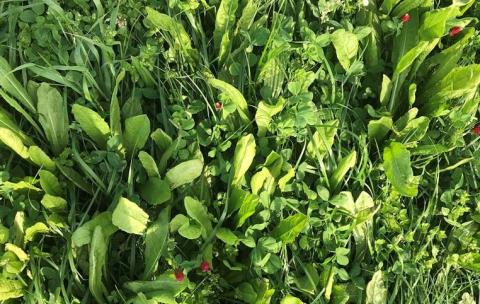The benefits include:
Nitrogen Efficiency: Legume-based mixtures improve nitrogen fixation, reducing the need for synthetic fertilisers. This benefits follow-on arable crops by providing a natural source of nitrogen, which can significantly cut down fertiliser costs.
Soil Structure: Deep-rooting species in diverse leys improve soil structure by creating macropores, enhancing water infiltration and root penetration. Improved soil structure is beneficial for arable crops, promoting better root development and access to nutrients.
Weed Suppression: Multi-species leys suppress weed growth more effectively than monocultures, reducing the need for herbicides. This leads to lower input costs and less environmental impact.
Soil Carbon Sequestration: Integrating grassland leys into crop rotations helps increase soil organic carbon stocks, enhancing soil health and fertility. This is particularly advantageous for maintaining long-term arable productivity.
Yield Stability: Higher plant diversity in grasslands enhances resilience to climatic stressors like drought, leading to more stable yields over time and across different environmental conditions. This stability is crucial for maintaining consistent pasture plant production if utilised for livestock production.
Implementation Strategies
Designing Seed Mixtures: Effective mixtures should balance species diversity with economic viability. Mixtures with 3-6 species from different functional groups (grasses, legumes, herbs) are typically recommended. The soil type and climate should dictate the species sown as some may not establish or persist if the conditions are unsuitable.
Management Practices: Some may choose to simply cut the forage but this will remove nutrients and therefore grazing with livestock is better. Grazing animals should be rotated as they will pick out the nutritious herbs and legumes and therefore reduce their longevity. Pasture rest is important to maintain these species and reap their beneficial effects.



